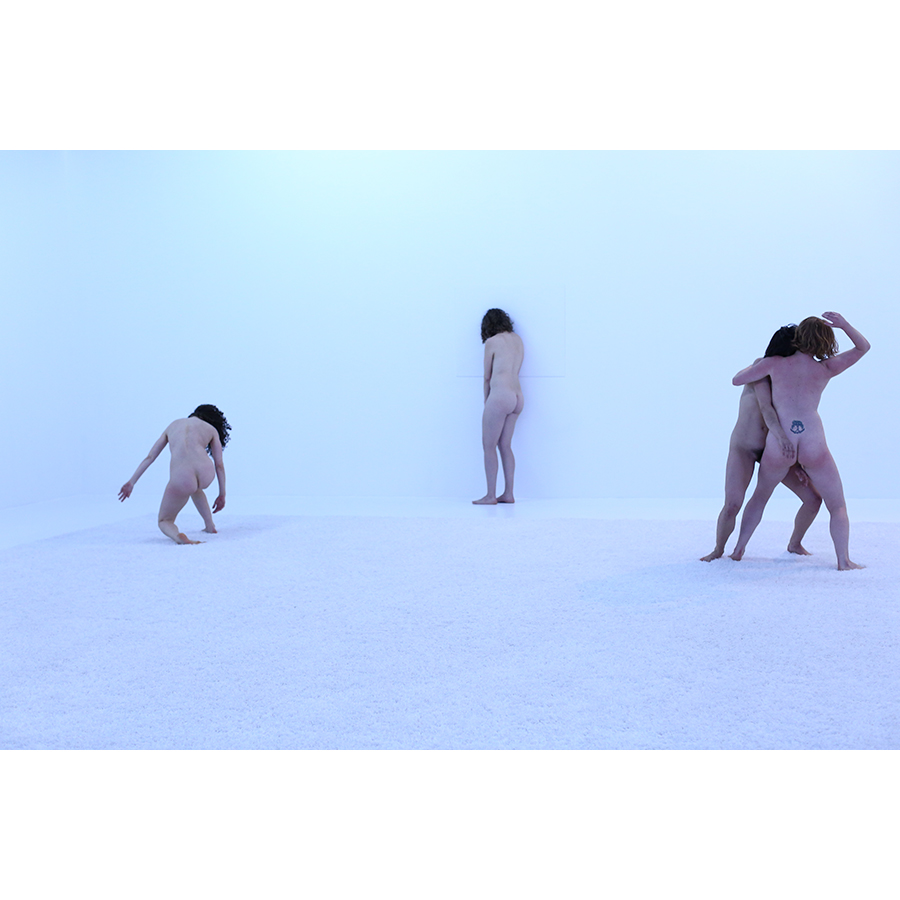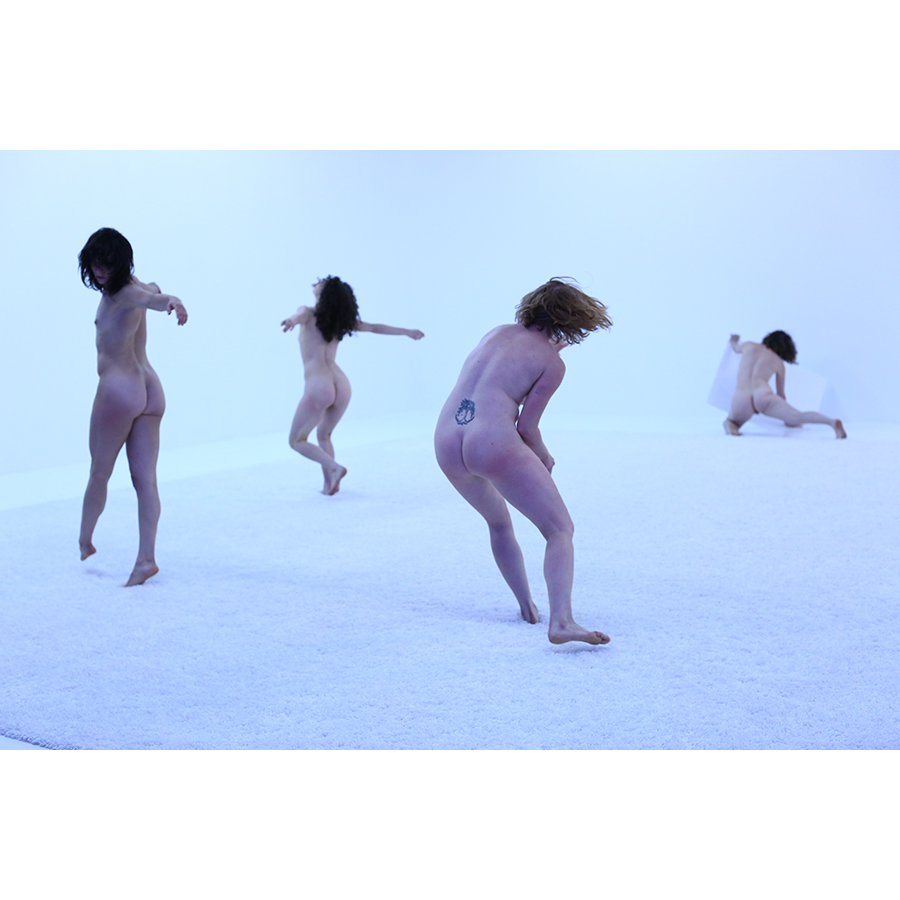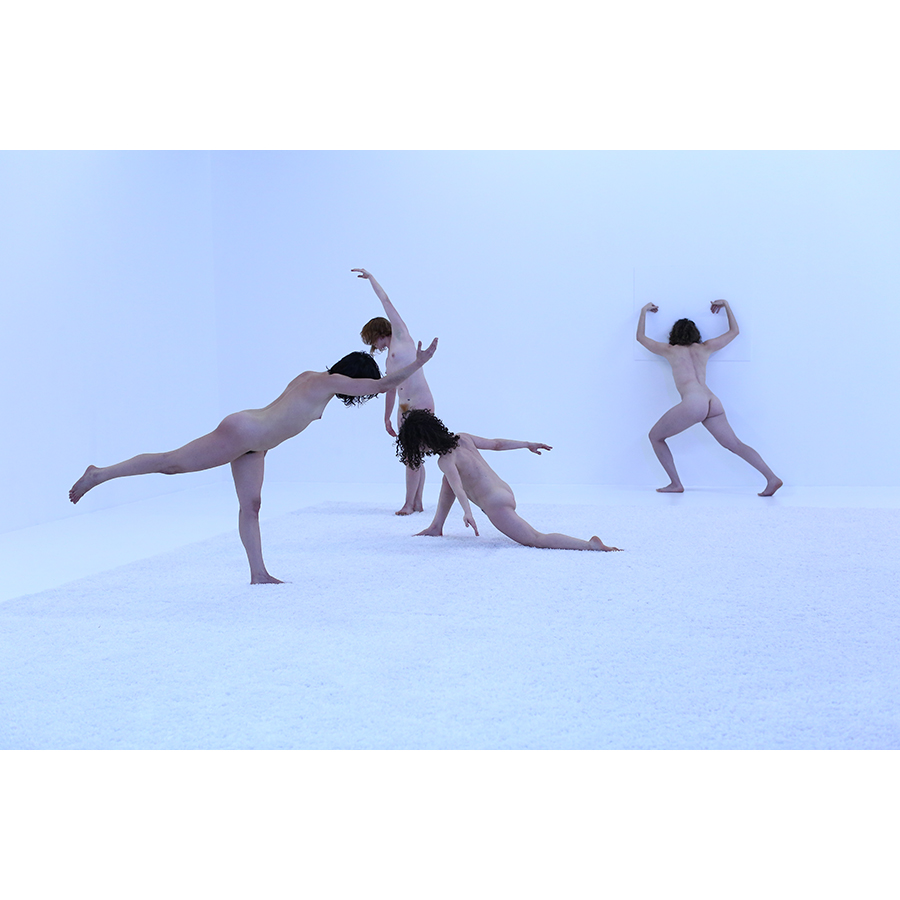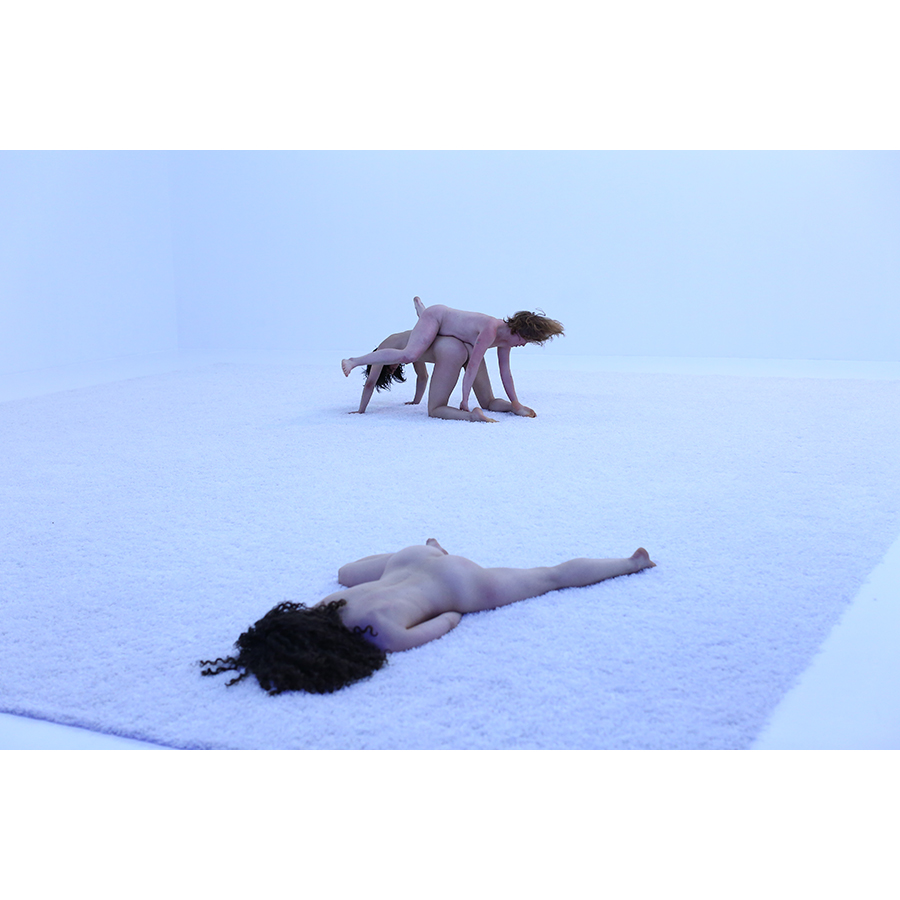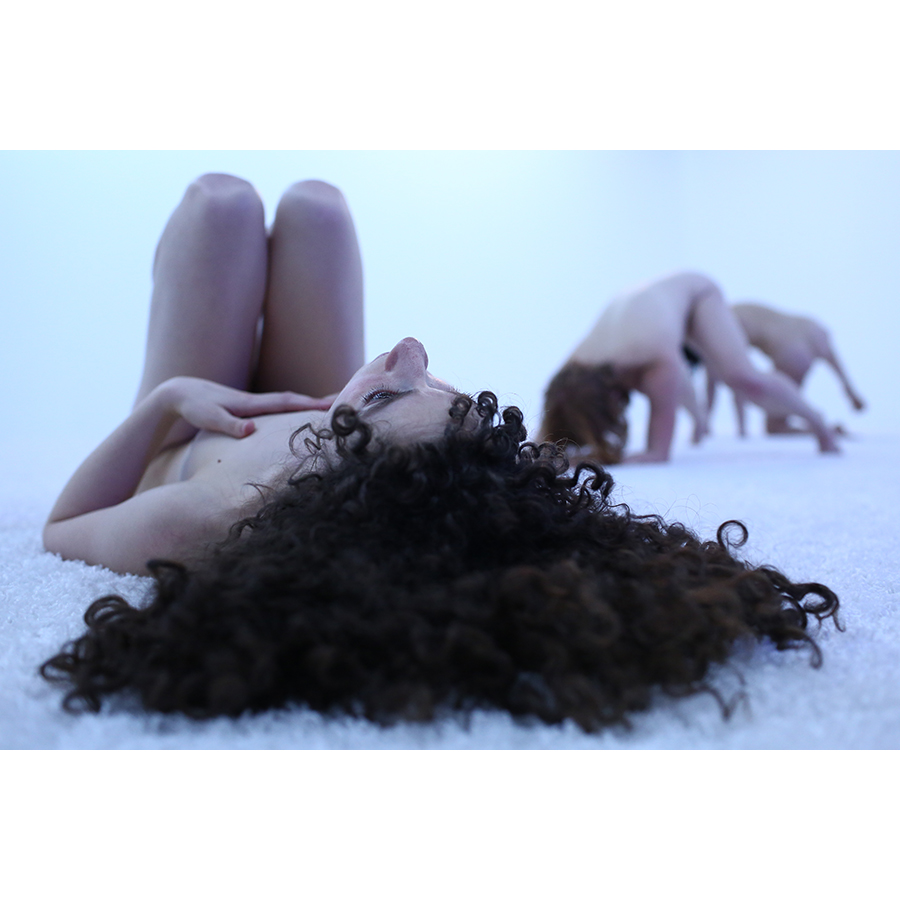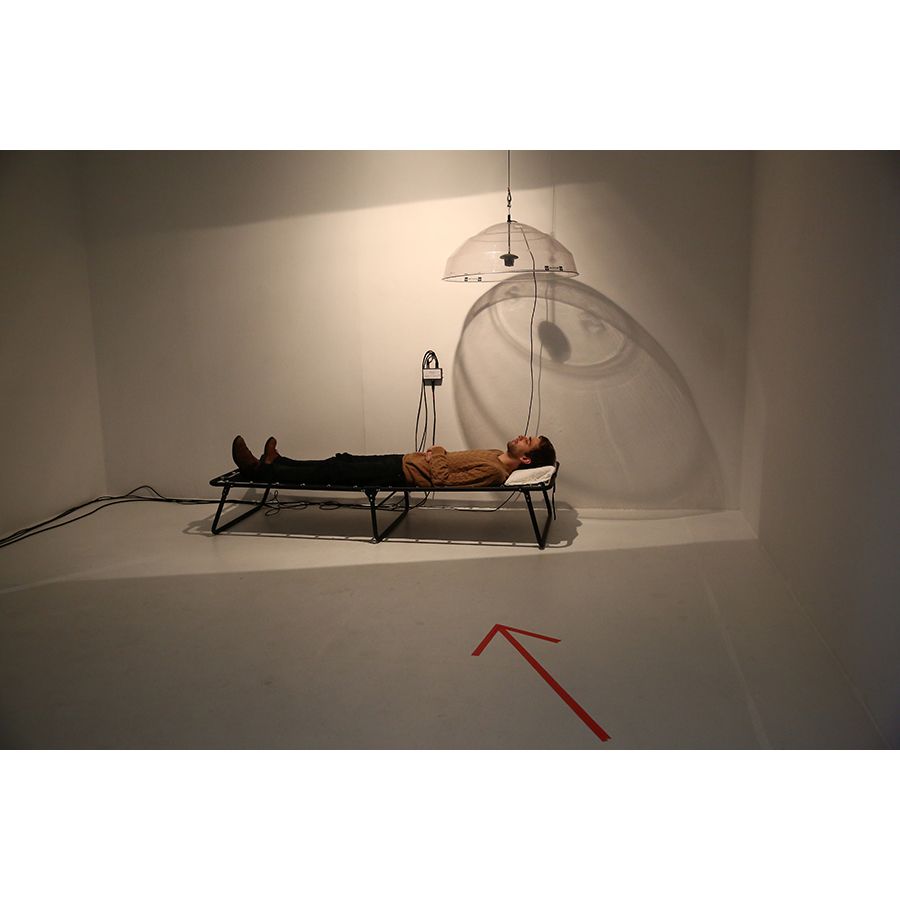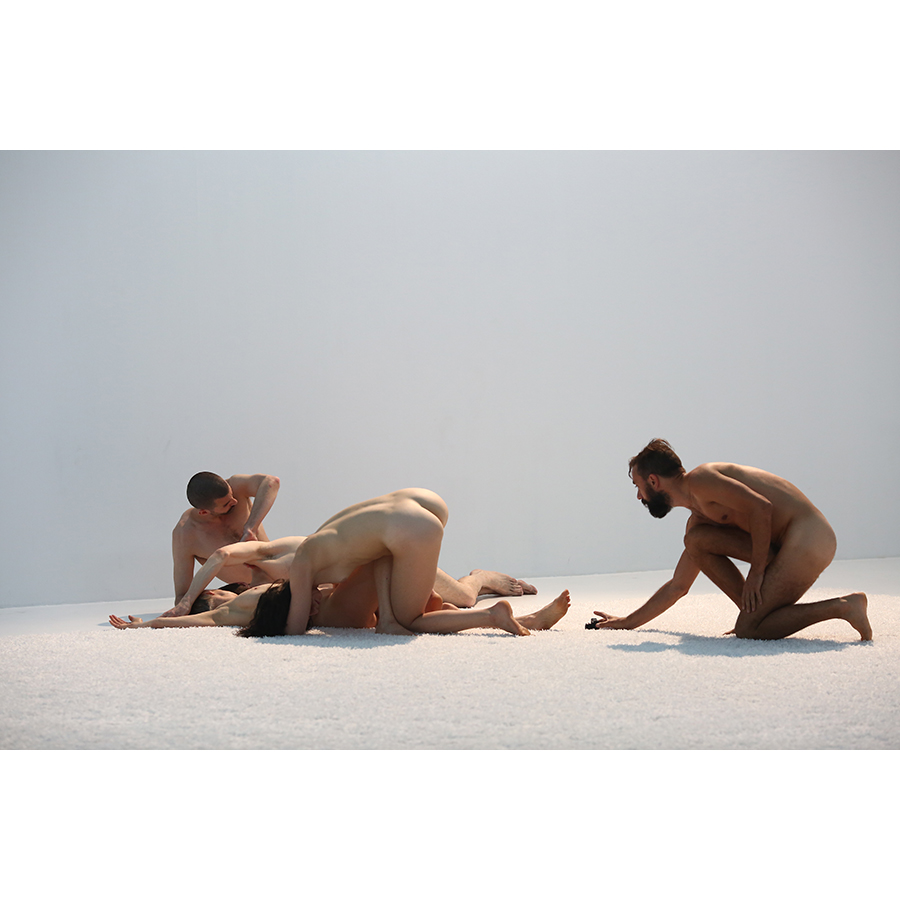Melinda Ring: Forgetful Snow
July 11 - 20, 2014
Forgetful Snow (the dance)
July 11-13** & 17-20, 8 PM
FREE, reservations recommended for 1 hour performance
The Landscape and Memory (of Snow) Machine
July 11-13 & 17-20, 4 - 7 PM
FREE, no reservations required
**WALK-IN SPACES ARE AVAILABLE FOR EACH NIGHT OF THE PERFORMANCE, IF SPACE ALLOWS.
RESERVATIONS: 213-625-1747 or info@theboxla.com
Melinda Ring’s Forgetful Snow, a triptych, comprised of two durational performances and an hour-long dance, investigates the transcendent possibilities of body and mind. By day, performers in the installations The Landscape and Memory (of Snow) Machine labor at searching for landscapes, retrieving lost moments of time and archiving the accumulating results. These simple tasks involving the body, video, and language are quietly focused and mysterious. In the evening, the dance is performed without clothing and accompaniment to strip it of layered-on meaning and emotion. Presented instead is an intimate and formally complex choreography with elusive performative demands and textures. Ring’s main collaborators for this project are the performers, Talya Epstein, Maggie Jones and Molly Lieber. This is the second project that Ring has done with The Box. The first, for the birds, was a collaboration with Jennifer Nelson in 2009.
With this project The Box demonstrates its on-going commitment to include dance and performance as part of our programing. We are interested in how these genres integrate into the larger practice of the visual arts. Ring’s choreographic practice, in particular, works within the context and ideas of contemporary art. Her Forgetful Snow is not just a dance, a choreography, a performance, an installation, a visual landscape, an art work, a movement based work, a conceptual work, a sculpture… it’s is all of them. — Mara McCarthy, Principal/Curator, The Box, LA
With The Landscape Ring aims is to frame the body as a landscape or physical site. Performers take turns arranging each other’s bodies to form tableaux within the gallery that are convincing landscapes. At the same time, equipped with a video camera they document details within the abstracted terrain, capturing the body as mountains, canyons, topography, etc., as well as incidental and unexpected activities from the process. The viewer sees the group live and sees the choreographer working on the video and screening the accumulating footage in a separate room.
In Memory (of Snow) Machine a performer lying still works to retrieve memories of snow (or dance). Not by observing and narrating them but by feeling themselves physically in the past moment. The performer verbalizes the experience in fragments of dialogue, thought, sensation. The viewer listens, in the room next door, lying on a cot under a localized speaker. They can choose to listen to memories from the archive or those currently being retrieved.
The choreography for Forgetful Snow was arrived at through a process Ring devised, a way of using improvisation, that takes away some of her control as a choreographer in an attempt to generate almost Cunningham-esque randomness with an idiosyncratic vocabulary. The choreography often seems imprecise and lax, but it’s actually very tightly predetermined. Peripherally one understands the precision and skill needed to accomplish many of the interactions, but it’s not about technical virtuosity.
Really the dance is more about destabilization, de-authoring, and transmission. My process with the dancers is very collaborative. Much of the movement material is generated by them. Working from video they learn other's material, rarely their own, and they never confer with each other. I choose what we keep, how it gets arranged and manipulated. Admonishing myself to not ruin it by smoothing over all the rough moments and watching for happy accidents. The dancers perform the piece always connected, dancing together, but, never in unison. They frequently can’t see each other, but cue through sound and energy—a combination of telepathy and… We’re looking for the musicality in a dance without music. It interests me to allow the complexity of the dance to be seen without the contextualization of costumes, cues, accompaniment. To not rely on these, is to allow the actions and interactions of the performers to be seen more purely—to be the only spectacle. — Melinda Ring
Paul Clay’s minimalistic lighting design, originally done for Forgetful Snow at The Kitchen (NYC) and reinterpreted at The Box by Ignacio Genzon, is the work’s most direct nature reference, with a different lighting look for each part: long shadows for The Landscape and cool-hued pre-dusk for the dance. There are no cues, only the perception of atmospheric shifts as the performers change their proximity to the light.
Each day of the show from 4 to 7 PM visitors can view the two durational performances, The Landscape and Memory (of Snow) Machine. These pieces are set within the main gallery space and three smaller adjacent rooms. These two are followed each evening at 8 PM by performances of the dance, Forgetful Snow. The show runs for one and a half weeks (July 11-13 & 17- 20) with 7 performance days, includes 11 performers (4 from New York, 6 local), and is free to the public.
Ring’s main collaborators for this project are performers Talya Epstein, Maggie Jones, and Molly Lieber. Additional performers include Lorene Bouboushian, Dorothy Dubrule (7/11-7/13, 7/17), Jmy James Kidd (7/18), Jos McKain, Betty Nguyen (7/12, 7/13, 7/17, 7/19, 7/20), Melinda Ring (7/11, 7/18-7/20) and Allison Wyper.
Melinda Ring (born 1960 in Los Angeles) works and lives in New York. In her work, she explores a very liberal definition of choreography creating dances, performance pieces, videos and installations. Her company Special Projects was founded in 2004. Recent works have been commissioned and presented by The Kitchen, Headlands Center for the Arts, Danspace Project, The Tang Teaching Museum at Skidmore College, Whitney Biennial, Mount Tremper Arts, and Santa Monica Museum of Art. In 2012/2013 Ring was an artist-in-residence at Headlands Center for the Arts, Gibney Dance Center (DiP), and LMCC (Swing Space). She has developed programing as an artist-curator for Danspace Project, and in Spring 2014 she was a critic in sculpture at Yale School of Art. This is her second show at The Box, her first, for the birds, was a collaborative project with Jennifer Nelson.
Talya Epstein is a freelance dance artist, originally from Massachusetts. She has recently been involved in creative processes with Anna Azrieli, Juliana May, Tatyana Tenenbaum, Larissa Velez-Jackson, and as a student of ballet with Janet Panetta. She also has a job at The Working Families Party in order to make ends meet.
Lorene Bouboushian is from rural Texas. She has shared work at Dixon Place, Danspace Project, JACK, and Grace Exhibition Space. She has taught through WingspanArts, Universidad de las Americas Puebla, and CLASSCLASSCLASS. She has also worked with luciana achugar, Lindsey Drury, Panoply Performance Lab, Daria Fain, and Kathy Westwater.
Maggie Jones lives in Crown Heights. She has been working with Melinda Ring/Special Projects since 2010 and has previously worked with Borts Minorts, Christine Elmo, Talya Epstein, and Deborah Hay. Jones graduated on scholarship from The Boston Conservatory and is currently pursuing studies at The Rolf Institute.
Molly Lieber grew up in Pittsburgh and graduated from Connecticut College. She makes duets with Eleanor Smith commissioned recently by PS122, Roulette, and The Chocolate Factory Theater. Molly dances for luciana achugar, Juliette Mapp, Keely Garfield, and Joanna Kotze, and is beginning a project with Neil Greenberg.
FACEBOOK EVENT HERE.
Read more about her well-received, sold out performance of Forgetful Snow at The Kitchen in New York HERE
photo: ©Paula Court
Commissioned by The Kitchen (curator, Matthew Lyons) and The Box, Los Angeles, Forgetful Snow is made possible with support from The Andy Warhol Foundation for the Visual Arts, Mertz Gilmore Foundation, The Jerome Robbins Foundation, and The Harkness Foundation for Dance. Ring received support from Lower Manhattan Cultural Council’s Swing Space program through a real estate donation from Savanna. This work was developed, in part, with support from Gibney Dance Center's Dance in Process residency program and the residency program at Mount Tremper Arts. Additional funding provided by the friends of Special Projects, a fellowship from the Chora Council of the Metabolic Studio, a project of the Annenberg Foundation, and 157 Kickstarter backers. This piece is supported in part by the Foundation of Contemporary Arts, Emergency Grant.
